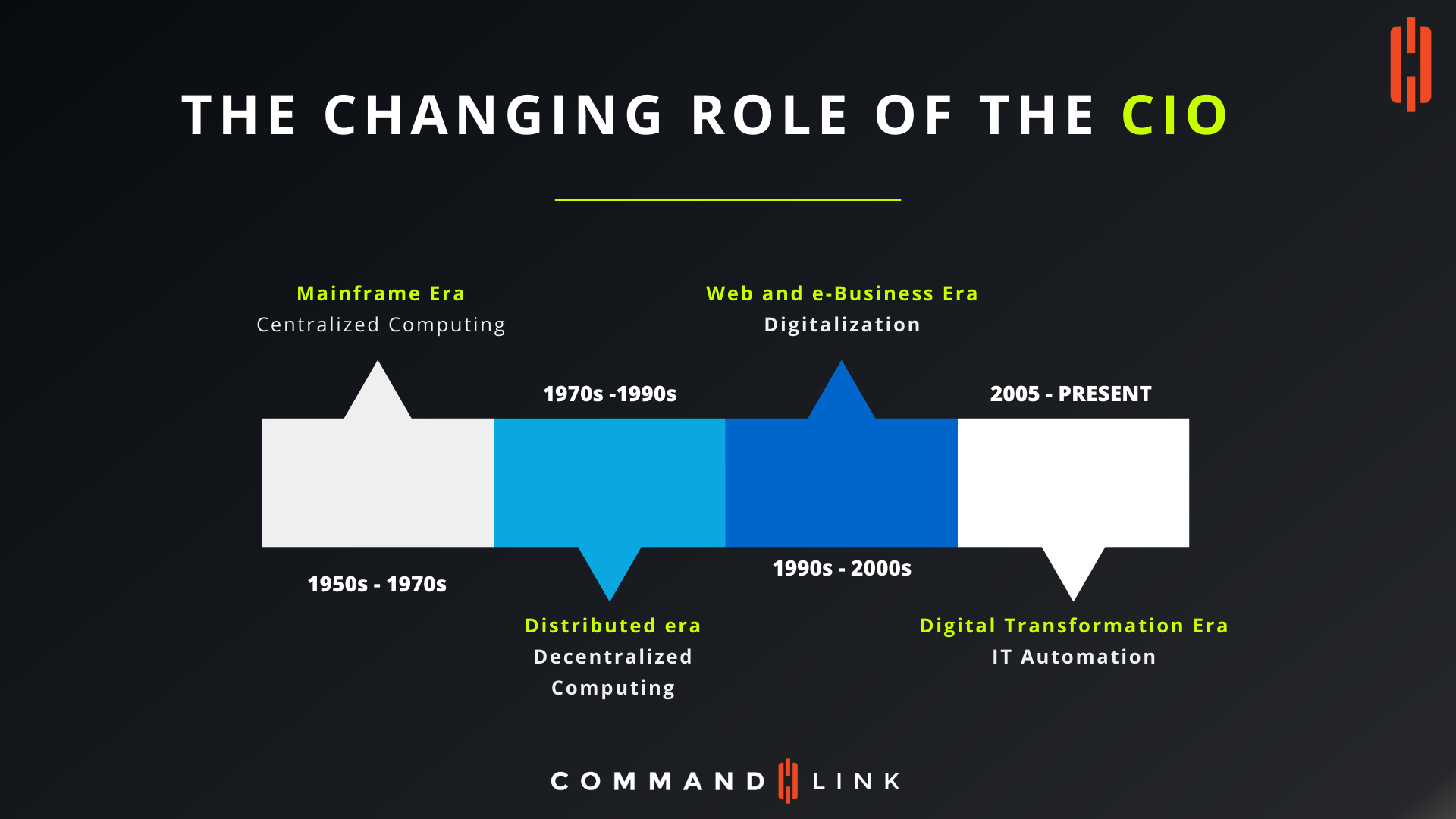Platform
Platform
Everything you need to run a secure global network—in a single system.
Solutions
Solutions
Learn how our solutions were designed to help you scale your IT resources
Company
CommandLink
Let's talk about how we can help you!
Partners

What is Driving the Changing Role of the CIO?
In today’s fast-paced digital world, the role of the Chief Information Officer (CIO) is more critical than ever. However, the expectations and responsibilities of a CIO have drastically evolved over the decades. This transformation can be understood through the lens of four distinct eras: the Mainframe Era, the Distributed Era, the Web and e-Business Era, and the Digital Transformation Era.
How did the Mainframe Era Shape the CIO Role?
Timeline: 1950s - 1970s
The Mainframe Era marked the dawn of centralized computing. During this time, the CIO's role was primarily focused on managing large, complex mainframes that powered the data processing needs of the entire organization. The responsibilities were highly technical, centered around ensuring that these mainframes were operational, efficient, and secure. The focus was on maintaining and optimizing centralized IT infrastructure.
What Changes did the Distributed Era Bring?
Timeline: 1970s - 1990s
The advent of decentralized computing in the Distributed Era brought significant changes. With the rise of personal computers and distributed networks, CIOs had to shift their focus from just managing centralized systems to overseeing a more complex and spread-out IT environment. This era required CIOs to manage the integration of multiple systems, ensuring that they worked together seamlessly across various departments and locations. The role expanded beyond technical maintenance to include strategic oversight of a more diverse and interconnected IT landscape.
How did the Web and e-Business Era Revolutionize the CIO Role?
Timeline: 1990s - 2000s
The explosion of the internet during the Web and e-Business Era brought about another wave of transformation for the CIO. Suddenly, IT was no longer just a support function but a critical component of business strategy. CIOs were now responsible for enabling digital business models, supporting e-commerce platforms, and ensuring that their organizations could compete in the rapidly evolving digital marketplace. This era saw the rise of digitalization, where the CIO's role became increasingly strategic, requiring a balance between technology and business acumen.
What does the Digital Transformation Era Mean for CIOs?
Timeline: 2005 - Present
Today, we are in the midst of the Digital Transformation Era, where IT is at the heart of virtually every aspect of business. The role of the CIO has evolved into that of a business leader who drives innovation, efficiency, and competitive advantage through the strategic use of technology. Modern CIOs are not just responsible for maintaining IT infrastructure; they are tasked with leading digital transformation initiatives that can fundamentally change the way businesses operate. This includes adopting new technologies such as cloud computing, artificial intelligence, and machine learning, all while ensuring cybersecurity and data privacy.
The role of the CIO has undergone significant changes, evolving from a purely technical position to a critical leadership role that drives business strategy and innovation. As technology continues to advance, the responsibilities and expectations of CIOs will only grow, making it essential for today’s IT leaders to stay ahead of the curve and continuously adapt to the ever-changing digital landscape. Understanding these historical shifts can provide valuable insights for CIOs looking to navigate the complexities of the modern digital era.